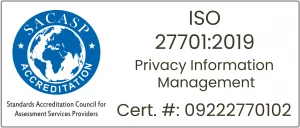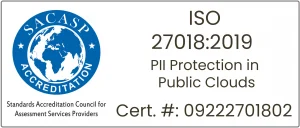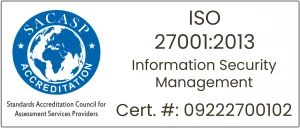© 2026 Macro Global. All Rights Reserved.
This article is a follow-up to our parent blog, “FSCS Updates 2025: Depositor Protection Changes & SCV Readiness”. That piece explained the regulatory updates proposed in PRA Consultation Paper CP4/25, including the increase in depositor protection from £85,000 to £120,000, the uplift in Temporary High Balance (THB) cover from £1m to £1.4m, and refreshed SCV disclosure and reporting requirements.
This article takes the conversation one step further. Instead of re-explaining the rules, it asks: how can financial institutions apply them accurately, defensibly, and under pressure?
Because the challenge of FSCS 2025 is not knowing the new limits. It’s ensuring your systems, governance, and audit controls can:
- Apply the right rule based on the failure date
- Manage edge cases without errors
- Generate a compliant SCV file within 24 hours
- Provide auditability that regulators can trust
This is where FSCS 2025 stops being a policy update and becomes an execution test for CROs and CTOs.
Why FSCS 2025 Is More Than a Policy Change
At first glance, FSCS 2025 looks like a simple uplift in depositor protection thresholds. But unlike most regulatory shifts, FSCS thresholds are triggered by the failure date of an institution, not by when deposits were made. This creates operational complexity:
- Firms must dynamically pivot between “old” and “new” limits.
- Edge cases (close to December 2025 or near the limit cap) magnify risk.
- SCV files must be delivered within 24 hours of a failure, with no margin for error.
This distinction makes FSCS 2025 a real-time execution challenge. It directly tests the resilience of your:
- Systems (can your SCV engine apply the right rule automatically?)
- Governance (are roles, approvals, and controls clearly defined?)
- Auditability (can you prove how the decision was made?)
What’s at Stake: Operational Risks for FSCS Compliance
1. Misapplied Threshold Logic
Applying the £120,000 FSCS limit to a failure on 30 November 2025, or continuing with £85,000 after 1 December, would result in miscalculated depositor protection. That is not a technical slip; it is a compliance breach, exposing firms to FSCS rejection, regulatory scrutiny, and customer backlash.
2. Legacy Systems and Hard-Coded Rules
Too many institutions still rely on outdated spreadsheets or siloed applications to generate SCV files. These often lack:
- Configurable thresholds
- Version-controlled logic
- Consistent audit trails
This makes FSCS compliance brittle and error prone.
3. Edge Case Complexity
Illustrative Example:
- A depositor holds £102,000, deposited on 28 November 2025
- If the firm fails on 30 November, only £85,000 is protected
- If the firm fails on 2 December, the new £120,000 applies
Scaling this logic across thousands of depositors within a 24-hour SCV deadline is where the risk intensifies.
4. Incomplete Audit Trails
In a post-resolution review, regulators will likely ask not just what the outcome was, but how it was reached. They may expect firms to show:
- Which rule version was applied
- How the failure date triggered the threshold
- Who approved the SCV configuration
- Whether any overrides were traceable and authorised
Even correct payouts could fail reviews if the process integrity is missing.
The CRO + CTO Readiness Playbook
FSCS compliance is not the responsibility of one function. CROs and CTOs must work together to ensure execution is both accurate and defensible.
Category | CRO Focus | CTO Focus |
| Rule Logic Management | Validate failure-date triggers and edge-case policies | Implement configurable rule engines with date-based versioning |
| SCV Ownership & Controls | Define rule ownership and approvals across 1st/2nd line | Centralise SCV logic and eliminate duplication across systems |
| Testing & Simulation | Run edge-case simulations pre- and post-December | Automate test cases across representative data samples |
| Auditability & Trace | Ensure every threshold decision is reconstructible | Enable full logging of SCV paths, rule versions, and user actions |
| Change Governance | Require dual sign-off for FSCS-related changes | Deploy CI/CD pipelines for SCV rule updates |
| Live Event Readiness | Conduct dry runs and pre-mortems of failure events | Build automated triggers for SCV activation and rule switching |
This playbook works only if owned jointly. FSCS readiness fails when risk and tech treat it as a baton-passing exercise.
Aligning Risk Controls with PRA Expectations
For CROs, FSCS 2025 readiness isn’t only about getting the numbers right. It’s about ensuring your control framework stands up to PRA scrutiny. The regulator will expect you to show that depositor protection isn’t managed in isolation, but as part of wider obligations on governance, resilience, and accountability.
The PRA’s CP4/25 consultation highlights depositor protection as a cornerstone of financial stability, making FSCS 2025 readiness inseparable from broader supervisory expectations.
That means linking FSCS controls back to:
- Operational resilience standards – proving SCV files can be delivered within the 24-hour window even under stress.
- Internal controls – documenting how rule changes are approved, tested, and monitored.
- SMCR accountability – demonstrating senior manager oversight of SCV governance and depositor protection.
Framing FSCS 2025 in this way turns it from a compliance task into evidence of broader risk discipline.
FSCS 2025 Action Framework
To prepare for FSCS 2025, firms need a plan that blends detailed execution guidance with a clear readiness checklist.
Detailed Guidance
- Audit SCV Logic Paths: Eliminate hard-coded thresholds and replace with configurable parameters.
- Simulate Edge Cases: Test November–December failures and THB expiries to validate failure-date logic.
- Clarify Governance: Define ownership of SCV rules, approvals, and communication paths.
- Enhance Audit Trails: Log rule versions, thresholds, and authorisations for every SCV decision.
- Cross-Train Teams: Align risk, ops, and IT on FSCS depositor protection and execution logic.
- Assess Tooling: Modernise internal systems or adopt external solutions such as SCV Alliance v25, purpose-built for FSCS 2025 compliance.
Integration Challenges: The CTO’s Reality
For CTOs, the hard part is rarely the rule logic — it’s making that logic work across complex, fragmented systems. Legacy core banking platforms, product silos, and batch-driven SCV processes don’t naturally lend themselves to dynamic threshold management.
The biggest hurdles tend to be:
- Data consistency: Ensuring depositor records are aligned across multiple systems.
- Real-time validation: Shifting from overnight batch runs to on-demand checks that can apply the right FSCS rule instantly.
- Testing at scale: Replicating edge cases across legacy environments where data flows are inconsistent.
Recognising these challenges early allows CTOs to plan for integration, not just configuration — and ensures SCV solutions perform when the regulator is watching.
Quick-Scan Checklist
- Dynamic rule logic in place (failure-date driven)
- Edge-case simulations completed (Nov–Dec, THB expiry)
- Clear governance framework documented
- Audit logging enabled for SCV decisions
- Cross-functional training delivered
- 24-hour SCV readiness rehearsed
- Technology modernised or solutions (e.g. SCV Alliance v25) adopted
From Compliance to Control: A Strategic Approach
Leading institutions are reframing FSCS compliance not as an admin task, but as an execution challenge that tests operational resilience. It’s about more than “updating a number.”
It requires infrastructure that can:
- Adapt dynamically to failure events
- Apply depositor protection rules consistently
- Provide defensible, auditable logic to regulators
Auditability is increasingly the regulator’s benchmark; a clean SCV file means little if firms cannot show how and why it was produced.
This is the principle underpinning SCV Alliance v25, a platform designed to meet FSCS 2025 requirements through configurable rule management, auditability, and real-time validation.
Key Capabilities of SCV Alliance v25
Feature | Strategic Benefit |
| Date-aware rules engine | Automatically applies the correct limit based on firm failure date |
| Configurable thresholds | Enables policy updates without deep code changes or long release cycles |
| Full audit trace | Logs every decision, rule version, and applied threshold for each depositor |
| SCV pre-validation | Flags misclassified accounts, duplicates, or anomalies before file submission |
| Dashboards and alerts | Provides real-time visibility into borderline balances and exception cases |
Final Thought: When the FSCS 2025 Threshold Shifts, Will You Be Ready?
The FSCS 2025 changes are more than a regulatory update. They are a systemic execution test for every UK financial institution to assess the institution’s ability to apply depositor protection rules consistently, defensibly, and under pressure.
This isn’t about simply knowing the £120,000 FSCS limit. It’s about applying the right limit, at the right time, with evidence to prove it.
- The CRO needs defensibility.
- The CTO needs flexibility.
- Regulators and customers will expect both.
When December 2025 arrives, regulators won’t just ask if you knew the rules. They’ll ask if your systems applied them, and if you can prove it. That’s the real test.
Transform your FSCS SCV reporting today with our all-in-one Enterprise Solution Suite! Reach us to know more!
Related Posts
19 November 2025 FSCS Single Customer ViewRegulatory Technology
PRA PS24/25 & SS18/15: Detailed Compliance Bulletin for FSCS Limit Update
Key compliance actions under PRA PS24/25 and SS18/15 for FSCS limit updates, SCV changes and disclosure obligations.
18 November 2025 FSCS Single Customer ViewRegulatory Technology
Regulatory Update: FSCS Deposit Protection Limit Rising to £120,000 – Key FSCS SCV Reporting Changes for Banks and Deposit Taking firms
FSCS changes for 2025 raise the protection limit to £120k. See what banks and other Fis must do for SCV reporting, THB updates, and regulatory compliance under the new rules.
18 November 2025 FSCS Single Customer ViewRegulatory Technology
SCV and Cloud Adoption for PRA & FSCS Compliance: A Guide to Operational Resilience
Learn how cloud-enabled SCV strengthens PRA and FSCS compliance, improves operational resilience, and enhances depositor protection for financial institutions.














